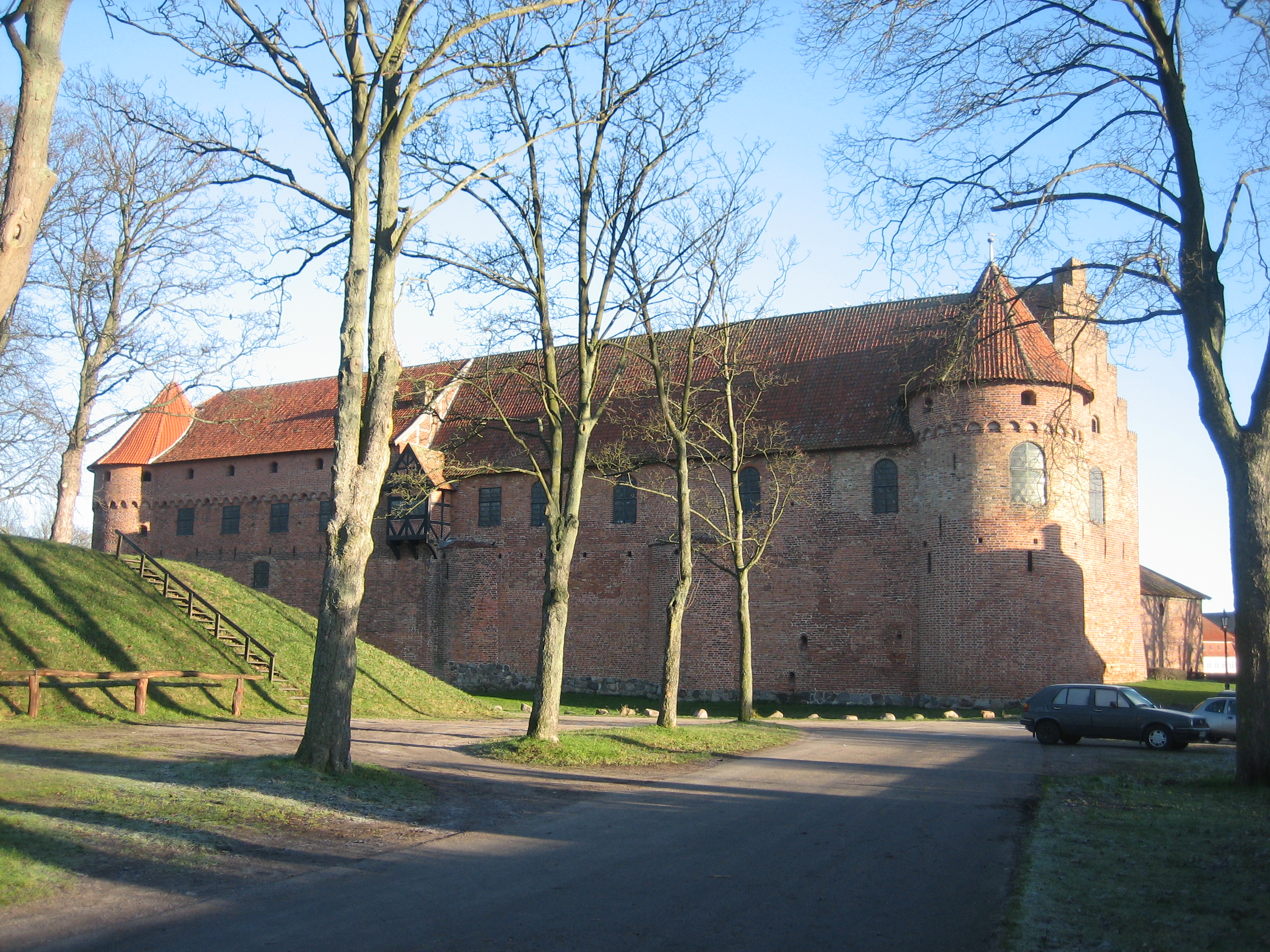|
Svendborg County
Svendborg County () is a former province in Denmark, located on the southern half of the island of Funen in central Denmark. Svendborg County was established in 1793 and abolished in 1970 when it merged with Odense County forming the new Funen County. The south Funen area was organized as Nyborg County in 1662, a province also including the Hindsholm peninsula. Hindsholm was incorporated into the new Odense County while the bulk of the former province was merged with Tranekær County and renamed to Svendborg County. This situation lasted until 1970 when Odense and Svendborg merged to form Funen County. Svendborg County featured the market towns (''købstæder'') of Faaborg, Nyborg, Rudkøbing, Svendborg, and Ærøskøbing. The latter town became part of the province in 1864. In spiritual matters, the county belonged to the Diocese of Funen. List of former ''herreder'' *Gudme Herred *Langelands Nørre Herred *Langelands Sønder Herred *Sallinge Herred *Sunds Herred *Vindinge Herre ... [...More Info...] [...Related Items...] OR: [Wikipedia] [Google] [Baidu] |
Svendborg
Svendborg () is a town on the island of Funen in south-central Denmark, and the seat of Svendborg Municipality. With a population of 27,300 (1 January 2022), Svendborg is Funen's second largest city.BY3: Population 1st January by urban areas, area and population density The Mobile Statbank from Statistics Denmark In 2000 Svendborg was declared "Town of the year" in Denmark, and in 2003 it celebrated its 750th anniversary as a . By road, Svendborg is located southwest of |
Faaborg
Faaborg or Fåborg () is an old port town located on Faaborg Fjord in Faaborg-Midtfyn municipality on the island of Funen in Denmark. By road, Faaborg is located southwest of Odense, west-northwest of Svendborg, and roughly southeast of Middelfart, depending upon the route. It has a population of 6,944 (1 January 2022). With its busy port, narrow streets and attractive old houses, the town is popular with tourists, particularly in the summer months. Faaborg was formerly the seat of Faaborg municipality. The seat of the new municipality is Ringe, Denmark, Ringe. Both municipalities use(d) Faaborg's medieval coat of arms. History Faaborg is first mentioned as ''Foburgh'' in a document located in the Archives nationales (France), French National Archives in Paris dated 25 June 1229. It is a deed of gift that gives Faaborg and the south of Funen as a Dower, morning present to Eleanor of Portugal, Queen of Denmark, Eleanor of Portugal, from Valdemar II of Denmark, Valdemar II to h ... [...More Info...] [...Related Items...] OR: [Wikipedia] [Google] [Baidu] |
Second War Of Schleswig
The Second Schleswig War ( da, Krigen i 1864; german: Deutsch-Dänischer Krieg) also sometimes known as the Dano-Prussian War or Prusso-Danish War was the second military conflict over the Schleswig-Holstein Question of the nineteenth century. The war began on 1 February 1864, when Prussian and Austrian forces crossed the border into the Danish fief Schleswig. Denmark fought the Kingdom of Prussia and the Austrian Empire. Like the First Schleswig War (1848–1852), it was fought for control of the duchies of Schleswig, Holstein and Lauenburg. Succession disputes concerning the duchies arose when the Danish king died without an heir acceptable to the German Confederation. The war started after the passing of the November Constitution of 1863, which tied Duchy of Schleswig more closely to the Danish kingdom, which was viewed by the German side as a violation of the London Protocol. The war ended on 30 October 1864, with the Treaty of Vienna and Denmark's cession of the Duchie ... [...More Info...] [...Related Items...] OR: [Wikipedia] [Google] [Baidu] |
Schleswig
The Duchy of Schleswig ( da, Hertugdømmet Slesvig; german: Herzogtum Schleswig; nds, Hartogdom Sleswig; frr, Härtochduum Slaswik) was a duchy in Southern Jutland () covering the area between about 60 km (35 miles) north and 70 km (45 mi) south of the current border between Germany and Denmark. The territory has been divided between the two countries since 1920, with Northern Schleswig in Denmark and Southern Schleswig in Germany. The region is also called Sleswick in English. Unlike Holstein and Lauenburg, Schleswig was never a part of the German Confederation. Schleswig was instead a fief of Denmark, and its inhabitants spoke Danish, German, and North Frisian. Both Danish and German National Liberals wanted Schleswig to be part of a Danish or German national state in the 19th century. A German uprising in March 1848 caused the First Schleswig War which ended in 1852. The Second Schleswig War (1864) ended with the three duchies being governed jointly by Austri ... [...More Info...] [...Related Items...] OR: [Wikipedia] [Google] [Baidu] |
Augustenborg County
Augustenborg may refer to: * Augustenborg, Denmark * Augustenborg Municipality * Augustenborg, Malmö * Augustenburg Castle, eastern Karlsruhe, Germany * Augustenborg Palace Augustenborg Palace (or Augustenborg Castle; da, Augustenborg Slot, german: Schloss Augustenburg) is a Rococo-style palace in the southwestern part of Augustenborg, Als Island, Denmark, overlooking Augustenborg Fjord. The palace owes its name t ... People * Cara Augustenborg, Irish and American environmental scientist {{geodis ... [...More Info...] [...Related Items...] OR: [Wikipedia] [Google] [Baidu] |
Ærø
Ærø () is one of the Danish Baltic Sea islands, and part of the Southern Denmark Region. Since 1 January 2006 the whole of Ærø has constituted a single municipality, known as Ærø Kommune. Before that date, there were two municipalities on the island: Ærøskøbing Kommune in the west and Marstal Kommune in the east. This merger was part of a reform of the public sector with the laws being effective as of 26 June 2005. This merger was allowed to happen one year before the other municipalities merged as there had already been an island-wide referendum with a majority of voters for the merger. Geography * Population (in 2020): 5,956 (island of Ærø only);5,964 (municipality). * Area: 88 km2 (island); 91 km2 (municipality) * Length of coastline: Ærø measures roughly 20 km from northwest to southeast and varies in width from around 4 to 8 km. There are three small towns on the island in 2020: the largest is Marstal with a population of 2,111. Ærø ... [...More Info...] [...Related Items...] OR: [Wikipedia] [Google] [Baidu] |
Ærøskøbing
Ærøskøbing () is a town in central Denmark, located in Ærø Municipality on the island of Ærø. The suffix - købing means a trade town in the languages that derive from Old Norse. Ærøskøbing's houses and streets are delicately restored to retain the character of the olden days. Most of them are one story tall, and the oldest ones date back to 1645. In the old part of the town are many fine examples of the work of skilled bricklayers, carpenters, and blacksmiths. Behind the idyllic façade of the town is a live and active town that has solved successive generations' housing needs for centuries. Ærøskøbing was awarded the Europa Nostra prize in 2002. The prize is awarded by the EU as a special appreciation of looking after cultural heritage. History From about 1250 Ærøskøbing was the centre for the island's commercial and maritime trade. A fire in 1629 destroyed a large number of houses, but after this the town experienced a renaissance. Old houses were rebuil ... [...More Info...] [...Related Items...] OR: [Wikipedia] [Google] [Baidu] |
Rudkøbing
Rudkøbing is a town in Denmark, on the western coast of the island of Langeland. It is the seat of Langeland Municipality, in the Southern Denmark Region. The town is located southeast of Svendborg and is connected to Siø through the Siøsund Bridge. History The first mention of Rudkøbing was in 1287, when it was given market town privileges by Duke Valdemar IV of Schleswig, who held the title of ''rigsforstander'' ( da) under King Eric VI Menved. The original Rudkøbing Church was built most likely in the late 12th century or early 13th century. During the Count's Feud (1534–1536) and again during the Dano-Swedish War (1658–1660), Rudkøbing was under siege by Swedish troops. Both times, the town's fortifications prevented Rudkøbing from immediately falling, but the town eventually had to give in to the Swedes. The town was hit by the Black Plague during the 16th and 17th centuries, and experienced fires in 1590 and 1610. The Ørsted family, which most notably incl ... [...More Info...] [...Related Items...] OR: [Wikipedia] [Google] [Baidu] |
Nyborg
Nyborg is a city in central Denmark, located in Nyborg Municipality on the island of Funen and with a population of 17,525 (2022). It is the easternmost settlement on Funen. By road, it is located 34 km east of Odense, 35 km north of Svendborg and 21 km south of Kerteminde. It also connects to Korsør through the Great Belt Bridge. Nyborg is the seat of Nyborg Municipality, and until 1793 it was also the seat of Nyborg County. The city was founded in the 1200s, built up around Nyborg Castle. The castle holds a central place in Nyborg geographically, historically and culturally. Etymology Nyborg was first mentioned in 1193 as 'Nyburg', which translates to 'new castle' in Danish. History Before Nyborg was founded, a fortification existed in the area under the name of Gammelborg. It was established in the 500s, and used throughout the Viking age until Nyborg was founded and took over its role. Nyborg was first mentioned in 1193 in the history of Denmark as N ... [...More Info...] [...Related Items...] OR: [Wikipedia] [Google] [Baidu] |
Market Town
A market town is a settlement most common in Europe that obtained by custom or royal charter, in the Middle Ages, a market right, which allowed it to host a regular market; this distinguished it from a village or city. In Britain, small rural towns with a hinterland of villages are still commonly called market towns, as sometimes reflected in their names (e.g. Downham Market, Market Rasen, or Market Drayton). Modern markets are often in special halls, but this is a recent development, and the rise of permanent retail establishments has reduced the need for periodic markets. Historically the markets were open-air, held in what is usually called (regardless of its actual shape) the market square (or "Market Place" etc), and centred on a market cross ( mercat cross in Scotland). They were and are typically open one or two days a week. History The primary purpose of a market town is the provision of goods and services to the surrounding locality. Although market towns were kno ... [...More Info...] [...Related Items...] OR: [Wikipedia] [Google] [Baidu] |
Counties Of Denmark
The Counties of Denmark ( da, Danmarks amter) were former subdivisions of metropolitan Denmark and overseas territories, used primarily for administrative regions, with each county having its own council with substantial powers. Originally there had been twenty-four counties, but the number was reduced to roughly fourteen in 1970 – the number fluctuated slightly over the next three decades. In 2006 there were thirteen traditional counties as well as three municipalities with county status (the island of Bornholm, which was a county from 1660 until 2002, became a ''regional municipality'' with county powers, but only briefly from 2003 until 2006). On 1 January 2007 the counties were abolished and replaced by five larger ''Regions of Denmark, regions'' which, unlike the counties, are not municipalities. Copenhagen County comprised all the municipalities of Metropolitan Copenhagen, except Copenhagen Municipality and Frederiksberg Municipality which, on account of their peculiari ... [...More Info...] [...Related Items...] OR: [Wikipedia] [Google] [Baidu] |




.jpg)



